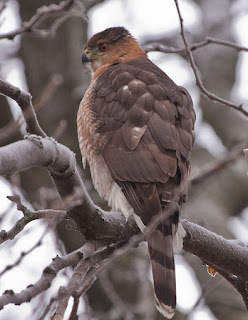Listen to the commentary
Real Audio : MP3 download
Last Monday morning, for the first time in four and a half years, I bicycled from home to work. The trip was made possible by the fact that my family recently moved back to central Champaign from the very southwest edge of town, where we had bought a house in the summer of 2007.
Back when we were contemplating our move to the suburbs, I convinced myself I would still be able to commute by bike—the ride to campus would just be a little longer.
But there were many impediments to bicycle commuting other than distance, chief among them roadways designed exclusively for cars.
 To ride in directly from the southwest, I would have had to cross I-57 on an overpass too narrow for cars to safely get by me, and then travel four miles on Kirby Avenue, which is equally inhospitable to cyclists. On top of that, my children could get nowhere without a ride, so as the parent with the part-time job, I needed access to a car throughout the day.
To ride in directly from the southwest, I would have had to cross I-57 on an overpass too narrow for cars to safely get by me, and then travel four miles on Kirby Avenue, which is equally inhospitable to cyclists. On top of that, my children could get nowhere without a ride, so as the parent with the part-time job, I needed access to a car throughout the day.As a short-term solution to my commuting problem, I bought a campus parking pass and racked up the miles behind the wheel. For a long-term fix, we moved back to the center of town, which brings me again to last Monday morning.
The temperature had dipped into the 20s overnight, so I dug out my cold weather cycling gloves and ear protection. The freezing fog seemed to call for extra visibility, so I donned a safety vest and put new batteries in my blinky lights.
 It took me a couple of tries to leave the house. I planned to go without my camera to lighten the load, but when I saw how the fog was frosting the landscape, I turned back for it. What self-respecting photographer could be out on such a day without one?
It took me a couple of tries to leave the house. I planned to go without my camera to lighten the load, but when I saw how the fog was frosting the landscape, I turned back for it. What self-respecting photographer could be out on such a day without one?Halfway down the block again I realized that there was too much breeze blowing through my hair. Home I went for my helmet.
Through downtown Champaign I traveled east on Clark Street and was interested to find bike lanes painted along my route. These particular lanes would do more to promote safe travel were they to include a dashed line at the approach to intersections, as do the other bike lanes established in around town in recent years.
Had I ridden without pause, I could’ve been at my desk in 15 minutes. But life’s a journey, right?
I stopped once to photograph some frost-covered seedpods on a Kentucky coffeetree. And I lingered along the Second Street Basin, where the City of Champaign has done such a fantastic job of combining flood control with the creation of naturalistic open space.
 As I approached Scott Park, a Cooper’s hawk lifted off from the native planting along the Boneyard Creek and settled into a nearby tree. While I photographed it, I was struck by how many other cyclists were out, despite the cold and fog. Some zipped by on Springfield Avenue integrated with the flow of car traffic, while others meandered through the park like me.
As I approached Scott Park, a Cooper’s hawk lifted off from the native planting along the Boneyard Creek and settled into a nearby tree. While I photographed it, I was struck by how many other cyclists were out, despite the cold and fog. Some zipped by on Springfield Avenue integrated with the flow of car traffic, while others meandered through the park like me.My observation seemed to confirm what I read recently, that increasing numbers of Champaign-Urbana residents are making more trips by means other than car. That’s a trend I’m delighted to participate in.



